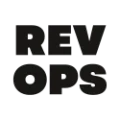The Breaking Point: Why Your $1M RevOps Setup Won't Scale to $10M
The operational systems that built your first $1M won't get you to $10M without breaking.
The Breaking Point: Why Your $1M RevOps Setup Won't Scale to $10M
You've mastered the scrappy startup hustle that got you here. But the operational systems that built your first $1M won't get you to $10M without breaking.
As founders and revenue leaders push toward ambitious growth targets, there's a critical inflexion point that separates sustainable scaling from operational chaos. Working with dozens of high-growth SaaS companies, we've identified key breaking points that emerge when companies attempt to scale without evolving their RevOps infrastructure.
The Warning Signs Your RevOps Foundations Are Cracking
1. Flying Blind: The Data Deficit
At $1M ARR, gut instinct and founder involvement can compensate for missing data. By $10M, this approach collapses. We consistently see companies hitting growth ceilings because they lack crucial sales datapoints throughout their deal process. Without properly tracked deal stages, conversion metrics, and sales activities, leadership finds themselves unable to make data-driven decisions at the exact moment when those decisions become most consequential.
Real impact: One client was consistently missing forecast by 30%+ because their CRM captured closing dates but not the critical qualification data that would have flagged at-risk deals earlier.
2. The "Whatever Works" Sales Approach Falls Apart
Early-stage companies thrive on adaptability, with founders and founding sales rep often adapting their approach for each prospect. This flexibility powers initial growth but becomes unsustainable as teams expand. Without a structured sales methodology and qualification framework, new hires struggle to replicate early success, deals stall in ambiguous stages, and training becomes ineffective.
3. Investors Demand Operational Clarity
When companies approach investors for their next round, the scrutiny intensifies dramatically. Investors don't just evaluate your product and market anymore, they're assessing your revenue engine's predictability. Companies without mature RevOps often scramble to retroactively create the forecasting accuracy and pipeline visibility investors expect. And then have to do it all again without any scalability.
From Founder Hacks to Sustainable Systems
The improvisational workflows that powered your initial growth become your biggest bottlenecks during scaling. We've seen founders manually updating spreadsheets at midnight before board meetings, sales teams maintaining shadow tracking systems, and marketing teams unable to attribute results to specific campaigns.
These approaches worked at $1M but create dangerous inefficiencies at scale:
Poor marketing attribution means increasing budgets without understanding ROI
Manual workflows that consume exponentially more time as volume increases
Inconsistent deal qualification that leads to wasted sales capacity
The Visibility Gap: When Founders Step Back from Day-to-Day Sales
Perhaps the most significant shift occurs when companies transition from founder-led sales to a structured revenue team. Suddenly, the founder who once had complete visibility into every deal now depends entirely on reports and dashboards for insight.
This creates an urgent need for executive-level reporting that tracks the right datapoints:
Pipeline coverage by stage and representative
Conversion velocity between stages
Leading indicators of deal health
Activity metrics that correlate with success
Without this visibility, leadership makes critical resourcing decisions based on incomplete information, precisely when those decisions have the greatest impact on growth trajectory.
High-ROI Investments at the Breaking Point
Companies that successfully navigate the $1M to $10M transition typically make several critical investments:
1. Strategic Revenue Leadership
The highest ROI often comes from engaging fractional GTM leadership with both in-house and consulting experience. This leadership bridges the gap between current operations and best practices, providing the strategic framework for scaling without the full-time executive cost.
2. Hands-On RevOps Implementation
Strategic vision requires practical execution. Companies need operationally minded RevOps managers who can translate strategy into systems, processes, and measurable outcomes. This role becomes the operational backbone that enables consistent execution.
3. Tool Stack Rationalisation
Contrary to what many assume, successful scaling often requires reducing, not increasing, the sales technology stack. By consolidating tools and focusing on core systems, companies reduce the total cost of ownership while increasing user adoption and data integrity.
Building the Bridge to $10M
The path from $1M to $10M isn't about incremental improvements to existing systems. It requires a fundamental evolution in how you structure, measure, and optimise your revenue operations.
Companies that recognise this inflexion point and proactively build their RevOps infrastructure don't just reach $10M faster.
They build the operational foundation that will eventually take them to $100M.
The question isn't whether your current systems will break under the pressure of scaling, it's whether you'll rebuild them before or after the breaking point.






